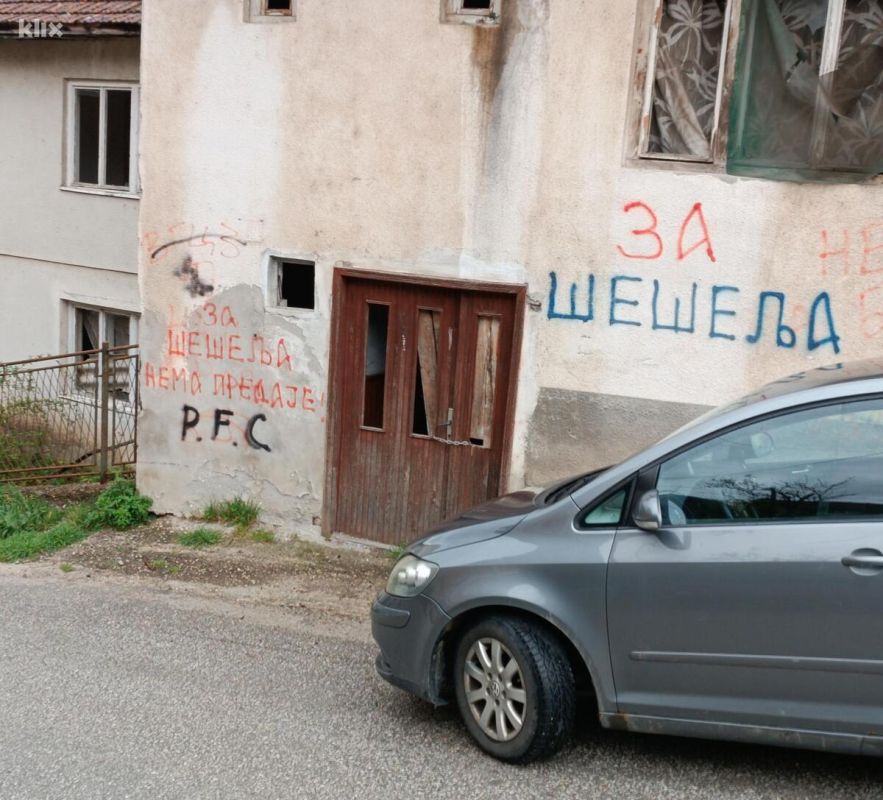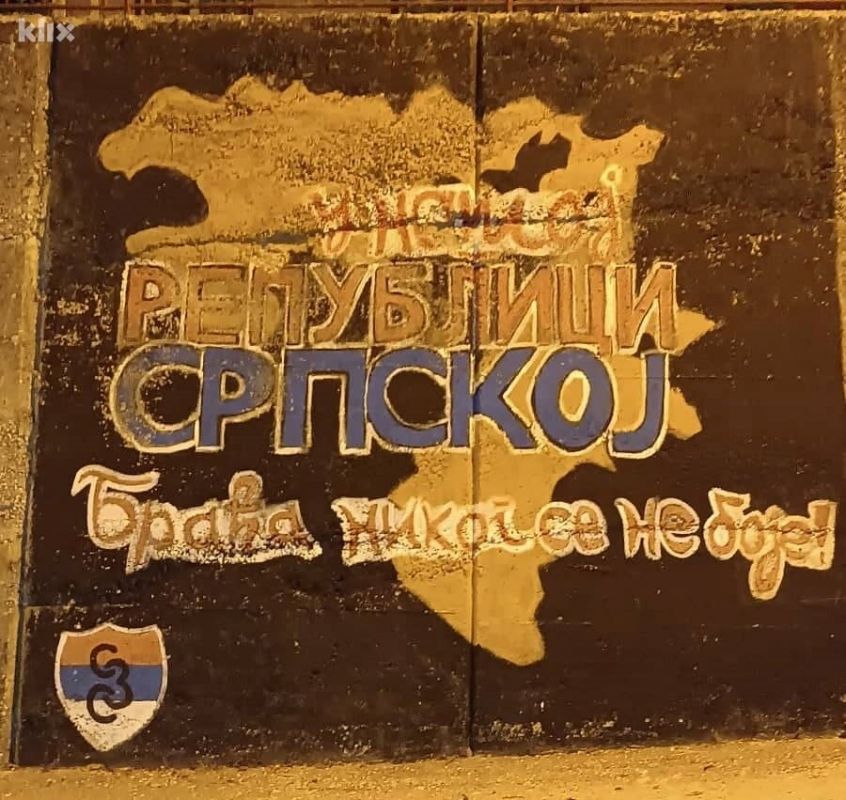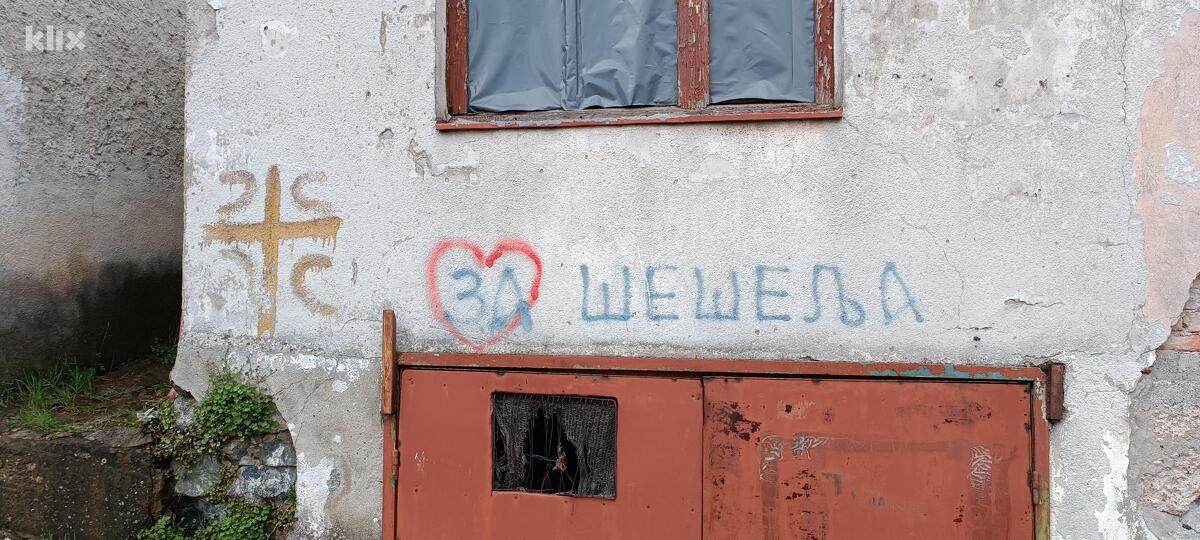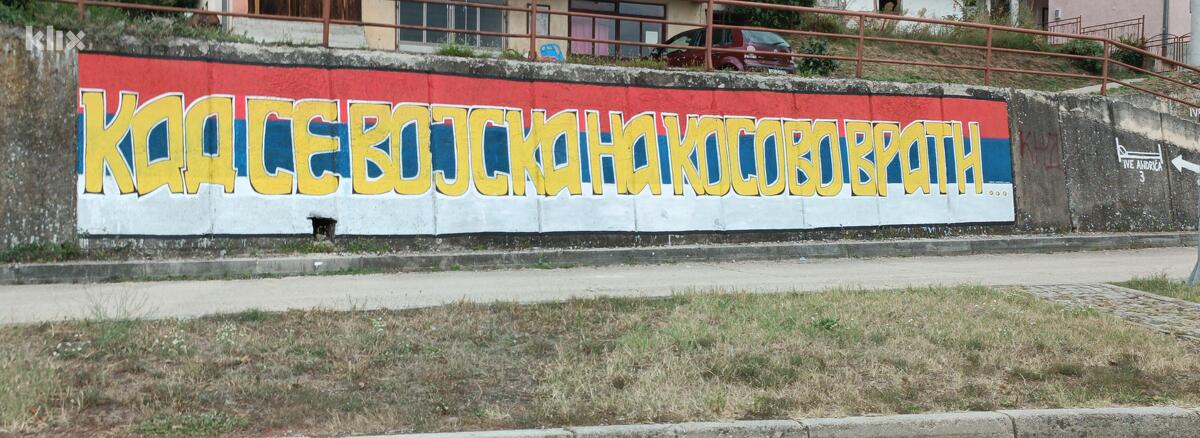Ermin Kuka, a citizen of Višegrad, senior research associate of the Institute for Research of Crimes Against Humanity and International Law of the University of Sarajevo, commented on the drawing of murals in Višegrad, which are increasing every day, and besides those dedicated to convicted war criminals, there are also murals dedicated to Kosovo and Russia.
"Višegrad, 28 years after the aggression and terrible crimes of Serbian armed formations committed against Bosniaks, became a place and fertile ground for the creation of various murals dedicated to convicted criminals and their crimes, but also to "Serbian" Kosovo, Russia,... Such murals are a reality of today's Višegrad. There are more and more of them every day and they sprout like mushrooms after the rain. Recently, there are more and more murals dedicated to Kosovo, which is no coincidence," Kuka points out.
A few days ago, a mural appeared at the entrance to Višegrad, on which was written "When the army returns to Kosovo", and Kuka reminds that it was in Višegrad on Vidovdan, June 28, 2011, that the construction of the complex "Andrićgrad" began, the creator of which is the director Emir Kusturica, while the majority financier was the Government Rs.
"That complex was built with the aim, as the Belgrade historian Ivan Čolović claims, of transferring the Kosovo myth to Višegrad. According to Ivan Čolović's insights, the Vidovdan swearing of Serbian leaders to Lazar and the invocation of Obilić could have been much more successfully performed outside of Kosovo after 1999 That is why the central church and state celebration of this holiday has been held in Kruševac in recent years, and Vidovdan is celebrated on June 28 every year in Višegrad, i.e. in the "Andrićgrad" complex. It has been shown, as Čolović claims, that in that place in Bosnia under the flag of the Kosovo vow can gather representative representatives of the political, church, military and cultural elite of RS and Serbia and show that the struggle for all Serbian interests, fueled by the Kosovo myth, has not stopped even after the wars of the nineties, regardless of the fact that in recent times the leaders of this struggle can be more successful hope in eastern Bosnia, but in Kosovo itself," says Kuka.

He reminds that in the "Andrićgrada" complex, the large Church of Saint Tsar Lazar and all Serbian martyrs - Lazarica - was built.
"It is dedicated to the Holy Martyr Lazar and the heroes of Kosovo. That church is, in fact, a replica (modified copy) of the Visoki Dečani monastery in Kosovo, with reduced dimensions adapted to the area where it is located. The intention, goal and purpose of those who create murals, but also those who approve them, which are the local authorities, is more than clear and unambiguous. The authorities and the tourist community can definitely include them in the tourist offer of Visegrad. Such murals have become an everyday occurrence in Visegrad, a well-known multi-ethnic city before the aggression," Kuka was outraged.

It is known that the suffering, pain and suffering experienced by Bosniaks from Visegrad during the period of aggression against the Republic of Bosnia and Herzegovina in 1992-1995. year, were of colossal proportions, and Kuka points out that the current ruling radical and extreme Serbian nationalism in Visegrad, whose indicators of existence and action we see in the mentioned murals, are an obstacle to the creation of better interpersonal relations and the overall security of Bosniaks.
.jpg)


Source: Klix.ba
